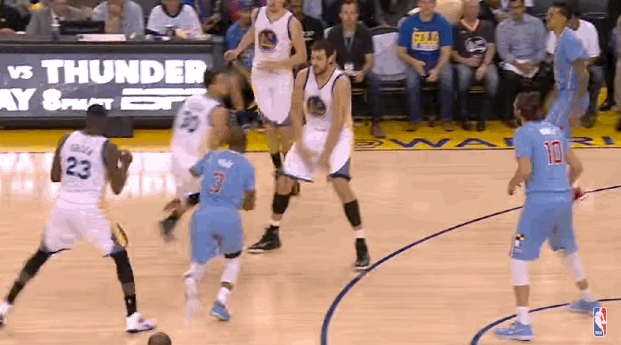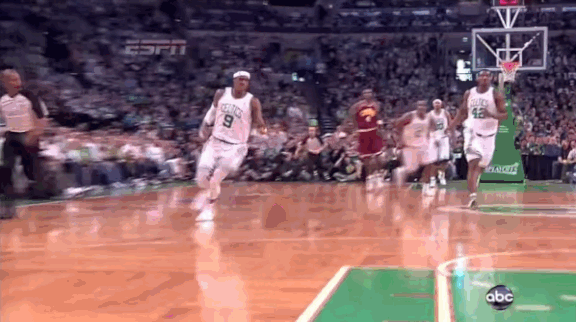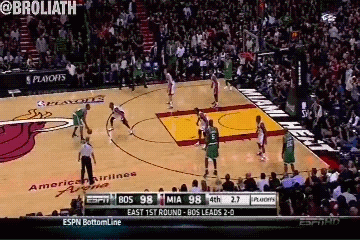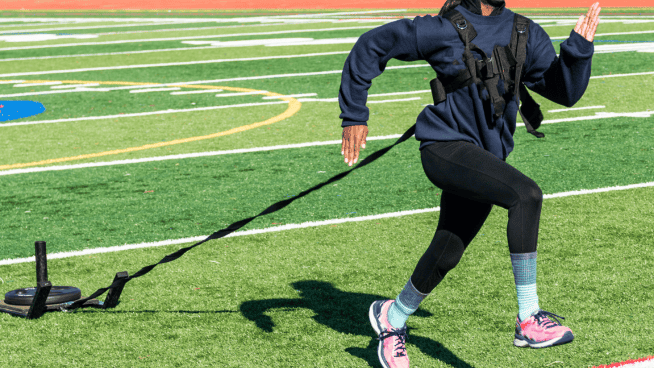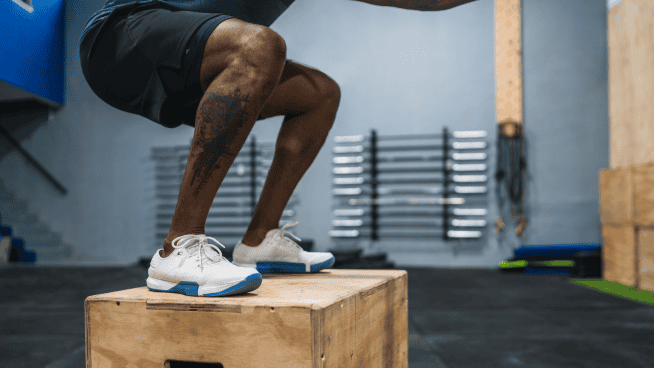Many Elite Basketball Players Possess These 3 Key Mental Skills
Tall. Fast. Quick. Strong. Explosive. Incredible wingspan. Absurd vertical jump. Basketball players, especially those in the NBA, are absolutely “freak athletes.”
Every player on an NBA roster has exceptional physical attributes. Out of those 15 guys on each team’s roster, only about eight or nine get meaningful playing time. And out of those eight or nine guys, only one or two are considered superstars (e.g., LeBron James and Kyrie Irving).
So, are these superstars great only because they are significantly better athletes/physical specimens than the other guys? Of course not. They are the whole package: They have both physical ability and cognitive skills. If all athletic success was based solely on physical attributes, then Steph Curry, at 6-foot-3 and 190 pounds, would probably be considered one of the worst players in the league, and we would be awarding MVP trophies to guys who dominate in the dunk contest.
RELATED: Mark Cuban Invests in Cognitive Training Leader Axon Sports
Obviously, this isn’t how it works. Basketball requires more than raw athletic talent and the ability to jump through the roof. Players also need to be able to shoot, pass, dribble, rebound, block shots, get steals, etc. But, there are also plenty of players in the NBA who are freakishly athletic and can shoot lights-out—but they’re good, not great players.
So, what makes a great player? This is where cognitive skills come in. You could be 6-foot-10, have great ball-handling skills, and be able to dunk from the foul line; but if you don’t have great court awareness and you repeatedly turn the ball over, you won’t help your team win and you’ll rarely see the court. It’s no different than a tall, strong-armed quarterback who throws interceptions and can’t read a defense.
The following players have certain cognitive skills that makes them great–and a nightmare for opponents.
Steph Curry
Cognitive Ability: Biological Motion Perception
Steph Curry has an unbelievable talent: He can read opponents’ biological motion. This means he has phenomenal anticipation skills and an elite ability to read body language. Having great anticipation skills allows him to know precisely where to pass the ball to a teammate cutting to the basket, or understand how to attack an opponent while in defensive pursuit. As detailed in a New York Magazine article:
“This is what separates great players from good players.” In other words, Curry’s brain is able to read his defender’s positioning—a foot set at an odd angle, a nose edging his weight too far to one side—and use the right ball movement—a head fake, a crossover—to create open looks out of thin air.
The ability to read biological motion is a vital skill for athletic success—not just in basketball, but in other sports as well. A 2015 study out of Montreal found that “athletes who are experts at biological motion perception had superior results in predicting passes in soccer and had quicker reaction times.”
RELATED: The Athletic Brain: How to Learn to Anticipate
Rajon Rondo
Cognitive Ability: Dynamic Visual Processing
Golf requires intense focus on a single ball that is lying still in the grass. Basketball also requires intense focus–but unlike golfers, basketball players need to focus on nine other players sprinting and cutting on a court, identify who is on offense/defense, and constantly know the whereabouts of the ever-moving ball. Being able to process all of those moving parts, while also anticipating where teammates/opponents will end up, is what makes Rondo an elite point guard with excellent passing abilities. He sees things before anyone else does.
This rare skill is also what makes Rondo a great defender. During the 2009-2010 season, he led the league in steals with 2.3 per game. During the 2015-2016 season, Steph Curry led the league in steals with 2.1 per game. Both players use their abilities to read body motion, anticipation and process dynamic scenes to cause turnovers and wreak havoc. Rondo, especially, uses these skills to bait opponents into making passes that they shouldn’t; and once they do, he’s there to add to his steal total.
Paul Pierce
Cognitive Ability: Focus
Clutch. That’s the first word that comes to mind when people think of Paul Pierce. Time and time again, Pierce has gotten the ball in his hands with seconds left in a tie game, and more often than not, he’s won it.
Pierce isn’t the fastest or quickest player in the NBA, but he is one of the smartest. He has always used great moves and technique to get open shots for himself—becoming a 10-time All-Star in the process. But the aspect of his game that truly makes him “The Truth” is his ability to focus and block out distractions in high-pressure situations. He repeatedly gets himself into “The Zone” during these situations, and he’s almost impossible to stop.
RELATED: How Vision Training Is Shaping the Next Generation of Football
There are many great athletes, in every sport, who have had stellar careers but couldn’t seem to capture that elusive championship or perform in crunch time when the lights are the brightest, the crowd’s the loudest and the pressure’s at an all-time high. Pierce isn’t one of those players. He has the cognitive ability to block out distractions and raise his game when it matters most. That’s what has made him an all-time great.
Obviously, physical attributes are important to success on the basketball court. These guys are some of the best basketball players and athletes in the entire world. But what separates the great players from the good ones is their cognitive abilities. Yes, many players are born with these talents, but you can train yourself to become better cognitively.
The same rules of training that apply to the body apply to the brain. Physically, if you’re slow, you train yourself to work on speed and agility. If you’re weak, you hit the weights and improve your strength. It was believed for a long time that, cognitively, you were stuck with the skills you were born with. But with new research supporting the concept of neuroplasticity training (essentially, rewiring the brain), that view has been proven wrong. We now know that if you have poor biological motion perception, sub-par dynamic visual processing, and difficulty focusing in chaotic environments—you can train those skills.
[cf]skyword_tracking_tag[/cf]RECOMMENDED FOR YOU
MOST POPULAR
Many Elite Basketball Players Possess These 3 Key Mental Skills
Tall. Fast. Quick. Strong. Explosive. Incredible wingspan. Absurd vertical jump. Basketball players, especially those in the NBA, are absolutely “freak athletes.”
Every player on an NBA roster has exceptional physical attributes. Out of those 15 guys on each team’s roster, only about eight or nine get meaningful playing time. And out of those eight or nine guys, only one or two are considered superstars (e.g., LeBron James and Kyrie Irving).
So, are these superstars great only because they are significantly better athletes/physical specimens than the other guys? Of course not. They are the whole package: They have both physical ability and cognitive skills. If all athletic success was based solely on physical attributes, then Steph Curry, at 6-foot-3 and 190 pounds, would probably be considered one of the worst players in the league, and we would be awarding MVP trophies to guys who dominate in the dunk contest.
RELATED: Mark Cuban Invests in Cognitive Training Leader Axon Sports
Obviously, this isn’t how it works. Basketball requires more than raw athletic talent and the ability to jump through the roof. Players also need to be able to shoot, pass, dribble, rebound, block shots, get steals, etc. But, there are also plenty of players in the NBA who are freakishly athletic and can shoot lights-out—but they’re good, not great players.
So, what makes a great player? This is where cognitive skills come in. You could be 6-foot-10, have great ball-handling skills, and be able to dunk from the foul line; but if you don’t have great court awareness and you repeatedly turn the ball over, you won’t help your team win and you’ll rarely see the court. It’s no different than a tall, strong-armed quarterback who throws interceptions and can’t read a defense.
The following players have certain cognitive skills that makes them great–and a nightmare for opponents.
Steph Curry
Cognitive Ability: Biological Motion Perception
Steph Curry has an unbelievable talent: He can read opponents’ biological motion. This means he has phenomenal anticipation skills and an elite ability to read body language. Having great anticipation skills allows him to know precisely where to pass the ball to a teammate cutting to the basket, or understand how to attack an opponent while in defensive pursuit. As detailed in a New York Magazine article:
“This is what separates great players from good players.” In other words, Curry’s brain is able to read his defender’s positioning—a foot set at an odd angle, a nose edging his weight too far to one side—and use the right ball movement—a head fake, a crossover—to create open looks out of thin air.
The ability to read biological motion is a vital skill for athletic success—not just in basketball, but in other sports as well. A 2015 study out of Montreal found that “athletes who are experts at biological motion perception had superior results in predicting passes in soccer and had quicker reaction times.”
RELATED: The Athletic Brain: How to Learn to Anticipate
Rajon Rondo
Cognitive Ability: Dynamic Visual Processing
Golf requires intense focus on a single ball that is lying still in the grass. Basketball also requires intense focus–but unlike golfers, basketball players need to focus on nine other players sprinting and cutting on a court, identify who is on offense/defense, and constantly know the whereabouts of the ever-moving ball. Being able to process all of those moving parts, while also anticipating where teammates/opponents will end up, is what makes Rondo an elite point guard with excellent passing abilities. He sees things before anyone else does.
This rare skill is also what makes Rondo a great defender. During the 2009-2010 season, he led the league in steals with 2.3 per game. During the 2015-2016 season, Steph Curry led the league in steals with 2.1 per game. Both players use their abilities to read body motion, anticipation and process dynamic scenes to cause turnovers and wreak havoc. Rondo, especially, uses these skills to bait opponents into making passes that they shouldn’t; and once they do, he’s there to add to his steal total.
Paul Pierce
Cognitive Ability: Focus
Clutch. That’s the first word that comes to mind when people think of Paul Pierce. Time and time again, Pierce has gotten the ball in his hands with seconds left in a tie game, and more often than not, he’s won it.
Pierce isn’t the fastest or quickest player in the NBA, but he is one of the smartest. He has always used great moves and technique to get open shots for himself—becoming a 10-time All-Star in the process. But the aspect of his game that truly makes him “The Truth” is his ability to focus and block out distractions in high-pressure situations. He repeatedly gets himself into “The Zone” during these situations, and he’s almost impossible to stop.
RELATED: How Vision Training Is Shaping the Next Generation of Football
There are many great athletes, in every sport, who have had stellar careers but couldn’t seem to capture that elusive championship or perform in crunch time when the lights are the brightest, the crowd’s the loudest and the pressure’s at an all-time high. Pierce isn’t one of those players. He has the cognitive ability to block out distractions and raise his game when it matters most. That’s what has made him an all-time great.
Obviously, physical attributes are important to success on the basketball court. These guys are some of the best basketball players and athletes in the entire world. But what separates the great players from the good ones is their cognitive abilities. Yes, many players are born with these talents, but you can train yourself to become better cognitively.
The same rules of training that apply to the body apply to the brain. Physically, if you’re slow, you train yourself to work on speed and agility. If you’re weak, you hit the weights and improve your strength. It was believed for a long time that, cognitively, you were stuck with the skills you were born with. But with new research supporting the concept of neuroplasticity training (essentially, rewiring the brain), that view has been proven wrong. We now know that if you have poor biological motion perception, sub-par dynamic visual processing, and difficulty focusing in chaotic environments—you can train those skills.
[cf]skyword_tracking_tag[/cf]
